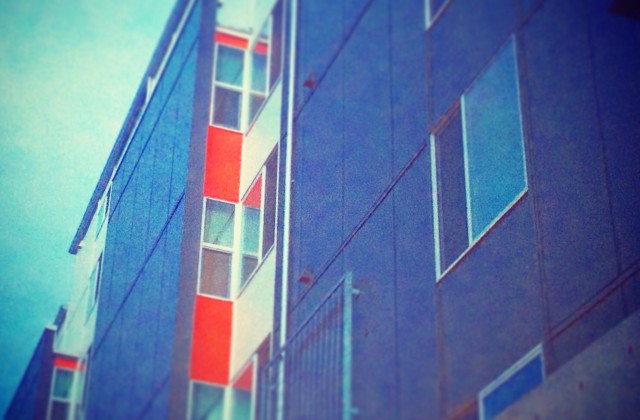Will Microhousing in Seattle Survive?
Later today, at a meeting of the Seattle City Council, legislation revising microhousing regulations will be introduced. As it now stands, Councilmember Mike O’Brien has some seriously damaging elements that will make microhousing harder to build—it may become so difficult that builders will opt for other, larger, and, for the renter, pricier options. The prices will go up, because Councilmember O’Brien is trying to make neighbors happy by imposing size limits on microhousing that will make many projects infeasible.
One project I looked at this week has units that range from 170 to 220 square feet. There are 35 rooms in this project, and one doesn’t have to be a mathematician—or have an MBA as O’Brien does—to understand that if that building was required to have all the room sizes average 220 as the Councilmember proposes, there would be fewer units. Fewer rooms means that the same financing, land, and construction costs will be spread among fewer units. That means higher rents.
Will microhousing in Seattle survive?
The answer depends on you.
Over the course of the last several months we’ve seen the Seattle City Council take deliberate steps to reduce housing supply by making it harder to build, imposing new regulations and rules that increase costs, and reduce housing capacity–essentially a huge downzone–in single-family neighborhoods and low-rise zones, a zone equipped to welcome many new people who want to live and work in our city. Next week the City Council will consider legislation that could negatively impact microhousing by mandating square footage minimums, and forcing microhousing through extra review and process that will end up in fewer and more expensive options for renters.
Please e-mail (and cc me) all Seattle City Councilmembers and the Mayor and let them know:
- I support microhousing as an important housing choice for people who want to live in Seattle;
- I support economic growth in Seattle and the jobs that come with it;
- In the next decade Seattle will welcome 120,000 new people and 115,000 new jobs. Planners say we need at least 70,000 housing units to accommodate this growth;
- Please make decisions to support more housing, especially innovative housing solutions like microhousing; and
- I urge you to oppose efforts to impose size limits and unit restrictions on microhousing that will decrease the number of units that can be built, and will increase their price.
ed.murray@seattle.gov
tim.burgess@seattle.gov
sally.bagshaw@seattle.gov
sally.clark@seattle.gov
jean.godden@seattle.gov
bruce.harrell@seattle.gov
nick.licata@seattle.gov
mike.obrien@seattle.gov
tom.rasmussen@seattle.gov
kshama.sawant@seattle.gov
Some want to say that microhousing is a contentious issue. But it is simple really; lots of people want the choice of smaller units in dense, transit friendly neighborhoods. Microhousing creates that choice for people who work in the city without any direct subsidization by the city. And remember, we’ve got 120,000 people moving to Seattle in the next 20 years. We can make more room for them and give them more options, or we can try to appease people already here.


